Author: Simon Wright
Photography: Paul Ward
Think Gordon Murray’s 900 kg T.50s is light? At 726 kg, the original Lola T70 was one of the first track-focused machines to fuse aerodynamic efficiency with aesthetics.
While it lacked any of the T.50s’ modern accoutrements and space-age materials, damn impressive given primordial technology and a stonking V8.
In case you’re unfamiliar with this vintage racer, T70 is an iconic sports prototype that played a significant role in motorsport history, particularly in the 1960s. Developed by British manufacturer Lola Cars, it was one of the most successful racing cars of its era.
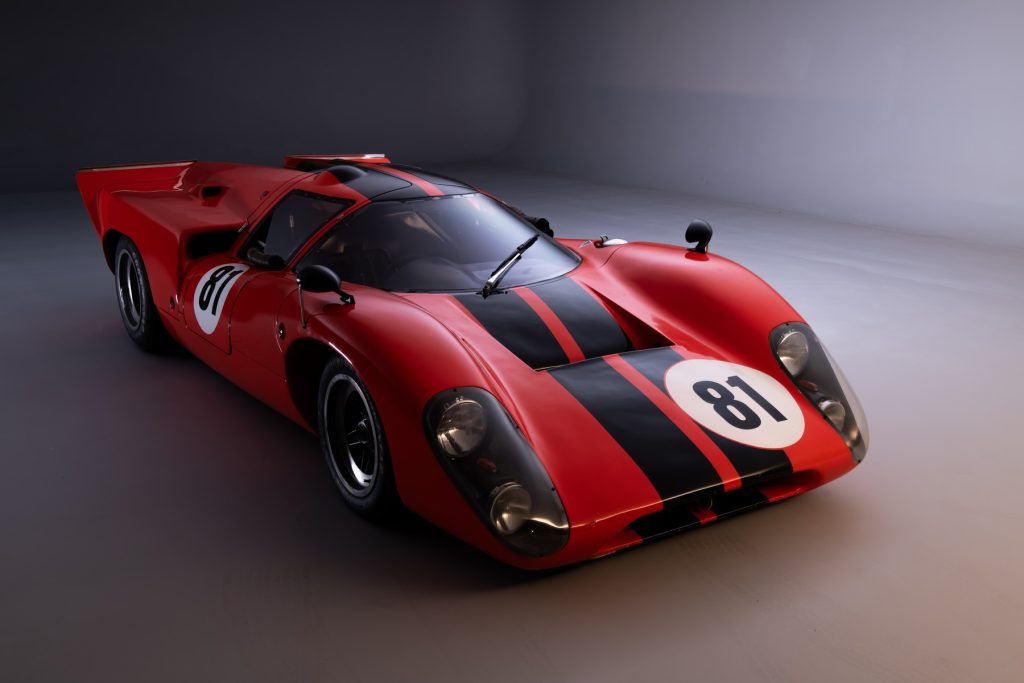
T70’s blend of speed, innovative engineering, and striking design made it a standout on the track. This article explores the history of the Lola, its racing pedigree, and the artistry behind capturing this legendary car on behalf of a Limited100 client.
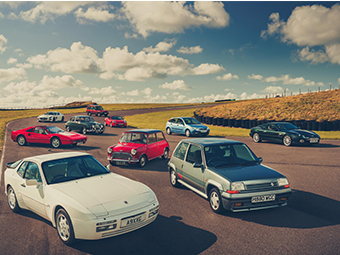
Birth of a Monocoque Monster
T70 was introduced in 1965 as a successor to the Lola Mk6. Designed by Eric Broadley, T70 featured an aluminium monocoque chassis that was paired with American V8 engines, the most common being the Chevrolet 327ci small-block, producing around 420 bhp and 400 lb-ft in its most potent form (although more recent examples and replicas have been given significant power increases, leading to staggering power-to-weight ratios).
This muscle was channeled through a 5-speed manual, sending it to 60 mph in under 4 seconds and onto a top speed north of 190. More than 100 examples of the T70 were produced in various configurations, including the Mk II Spyder, Mk III Coupe, and the updated Mk IIIB.
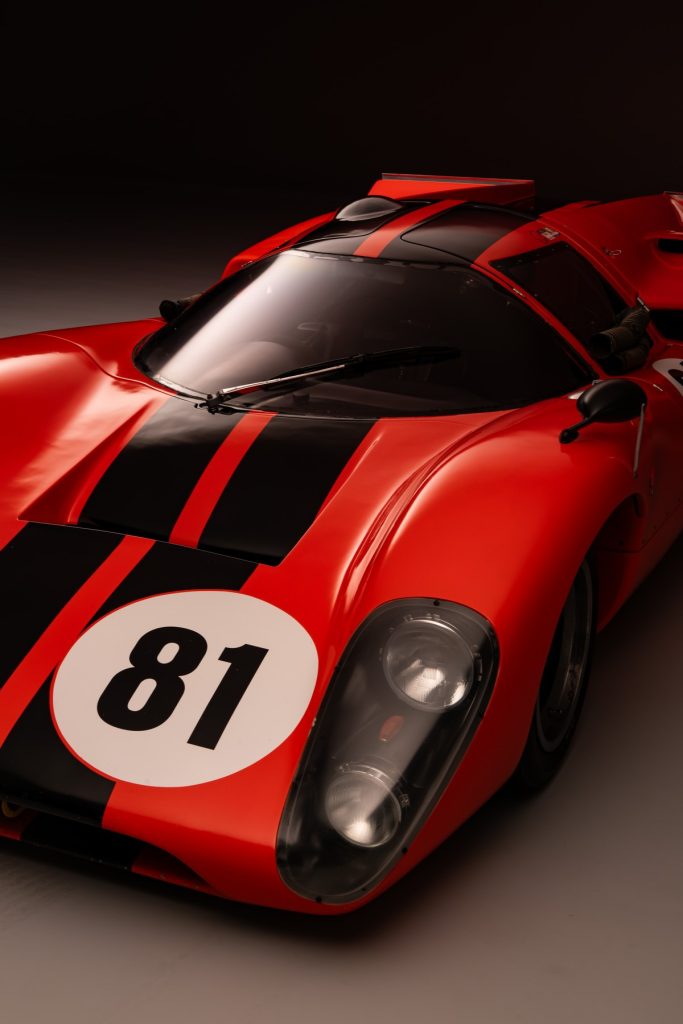
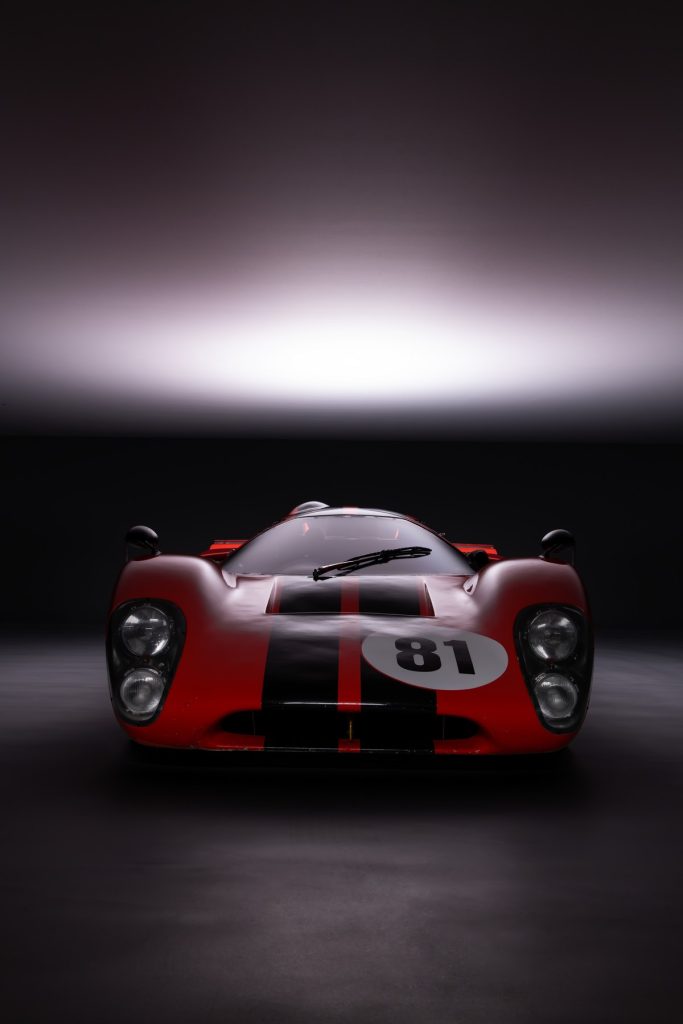
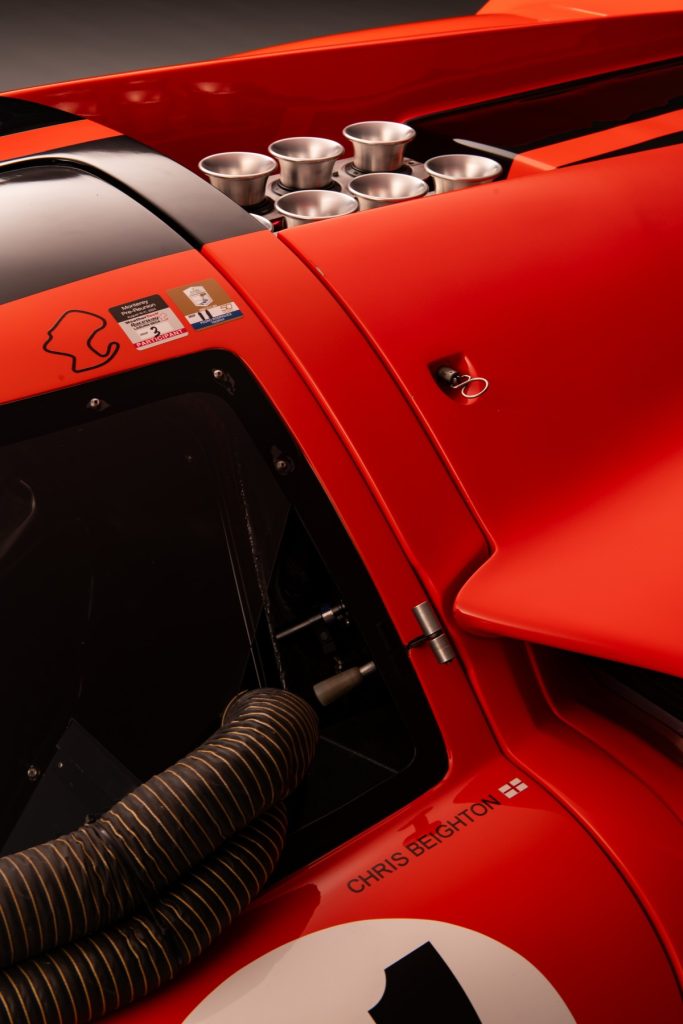
T70 quickly established itself as a formidable competitor in motorsport, particularly in the Can-Am series, where it competed against other behemoths like the Ford GT40 and Porsche 917. Its light, aerodynamic design and robust powertrain made it a favourite among drivers and a consistent top contender in major races.
Racing Success and Achievements
The Lola T70’s career was marked by impressive victories, notably in the mid-to-late 1960s. One of its earliest triumphs came in 1965, when Walt Hansgen won the Monterey Grand Prix at Laguna Seca in a Lola T70-Ford.
T70 became a dominant force in Can-Am racing, especially in 1966 when the Chevrolet-powered version won five out of six races, with John Surtees claiming the championship title.
In endurance racing, T70 also showed its prowess. In 1969, the Sunoco Lola T70, driven by Mark Donohue and Chuck Parsons, took first place in the 24 Hours of Daytona, marking one of its most significant endurance racing victories.




Despite this success, T70’s dominance gradually waned as newer competitors like the McLaren M6 and Porsche 917 emerged in the early 1970s. T70 also made its mark at Le Mans, though with mixed results. While it struggled to match the newer, more advanced cars like the Porsche 917, T70 still had moments of brilliance, including a notable showing at the 1969 24 Hours of Le Mans, where it continued to race despite the changing rules in the sport.
T70’s Impact on Motorsports
What truly made T70 stand out, aside from its obvious good looks, was its adaptability. Despite the changing landscape of motorsport and the evolution of racing technologies, it continued to be competitive.
Its success in Can-Am racing, along with appearances in major endurance races like Le Mans and Daytona, cemented its place in racing history.
In the 1960s, T70’s combination of aerodynamics, lightweight construction, and raw power made it a tough competitor for any race car of the era.
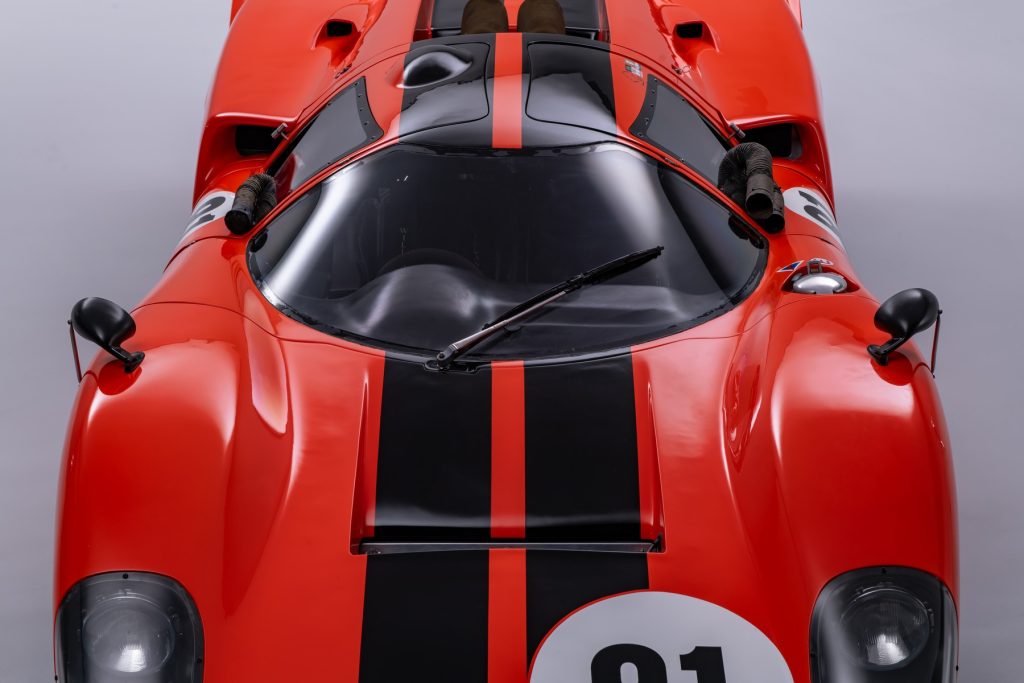
A distinctive body shape, wide wheel arches and sleek lines, gave it an aggressive and unmistakable presence on the track.
However, T70’s era was relatively short-lived in the highest levels of racing. As new regulations and faster competitors emerged, T70 was replaced by lighter and more advanced models like the Lola T160.
A Glimpse into the World of Historic Racing
Though no longer a contender in modern competitions, many T70s have found their way to private collections and have been carefully restored to their former glory.
Despite the challenges of maintaining such a precious machine, enthusiasts continue to celebrate T70’s design, engineering, and historical significance.
Strong ties to historic racing events like Le Mans, and appearances in films such as Steve McQueen’s Le Mans, have ensured that T70’s legacy remains intact.
It even appeared as a stand-in for the Porsche 917 in the 1971 film THX 1138, showcasing its continued cultural relevance.
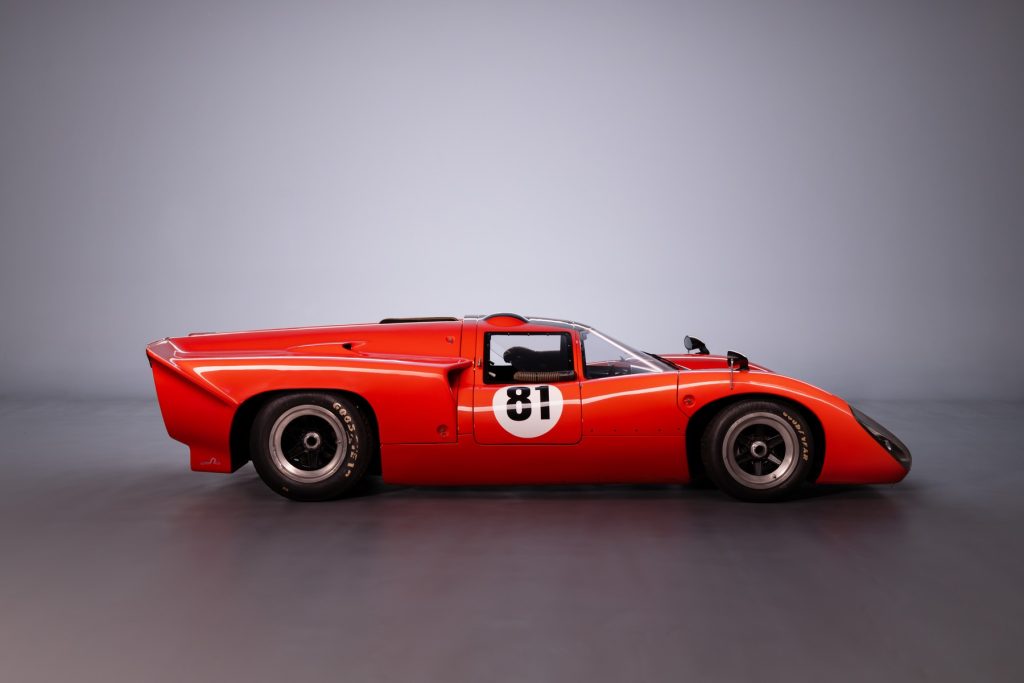
The Art of Capturing Lola T70: A Photoshoot at Kinetics Group
In a bid to immortalize the Lola T70 in a modern artistic context, Limited100, the Nottingham-based luxury automotive art brand, recently staged a stunning photoshoot on behalf of a client, of a Mk3B at Kinetics Group’s state-of-the-art Infinity Cove studio in Northamptonshire.
The goal was to capture the essence of the Lola T70 – its racing heritage, engineering precision, and striking, diaphanous design, in a way that speaks to both car enthusiasts and collectors.
Award-winning photographer Paul Ward was selected to photograph the car, utilizing the cutting-edge lighting and expansive space at the Infinity Cove.
This studio, known for its impressive 23m x 16m layout and RGB+CCT Lightbox, provided the perfect backdrop for the T70’s aerodynamic curves and sleek design.
The lighting setup allowed Ward to highlight the car’s aggressive stance and intricate details, producing images that felt as dynamic and captivating as the T70 itself.
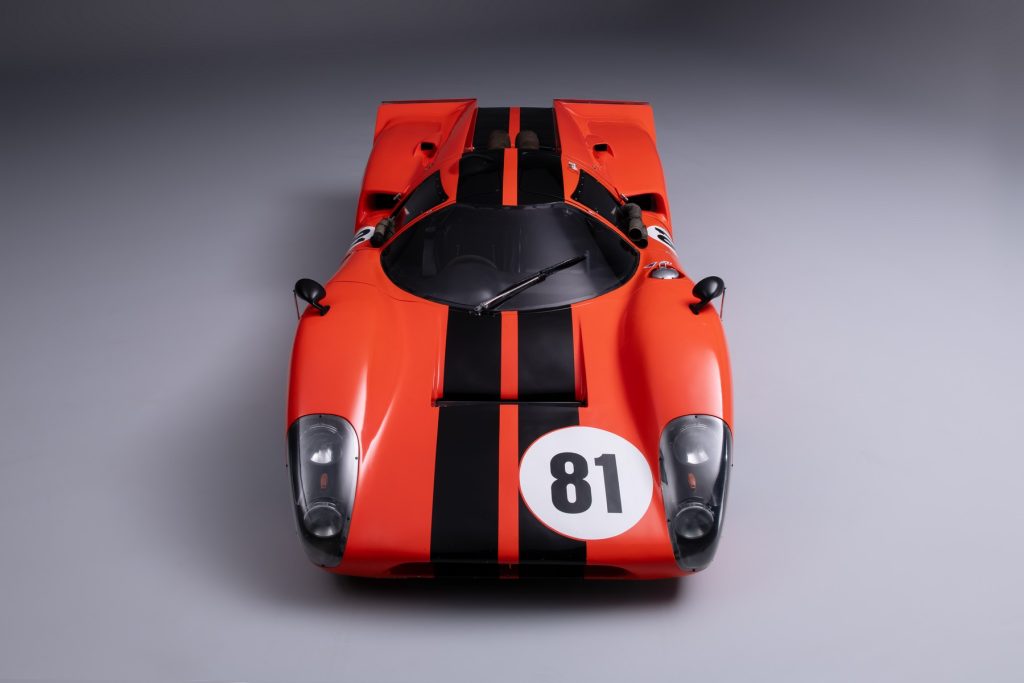
The result is a series of breathtaking photographs that not only showcase its brutal beauty but also tell its story. Each image is more than just a picture; it’s a tribute to a car that changed the world of motorsport.
Simon Wright, founder of Limited100, added: “Claiming T70 changed the world of motorsport could be perceived as a bit bold, but it was arguably one of the first to amalgamate aerodynamics with structural integrity, making it one of the first real ‘modern’ racers of its time. Even today, you can see echoes of T70’s proportions in modern racing prototypes.
“When I first laid eyes on it in Kinetics’ studio, the Lola had the brooding presence of a Durango 95, from A Clockwork Orange fame. Perhaps it was just the colour and 70s style. The exposed ITB trumpets made it look like some living, breathing alien life-form, which Paul captured in detail, one of my favourite images from the photoshoot.”
Future of Lola T70
As the demand for vintage racing cars like T70 remains strong, enthusiasts and collectors continue to celebrate the car’s legacy.
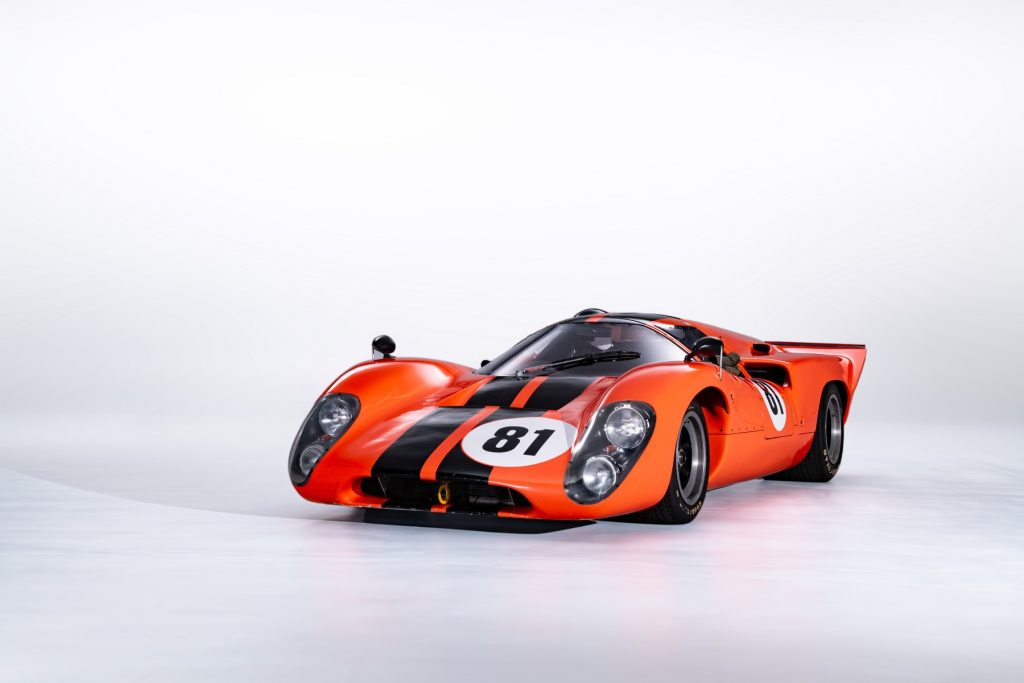
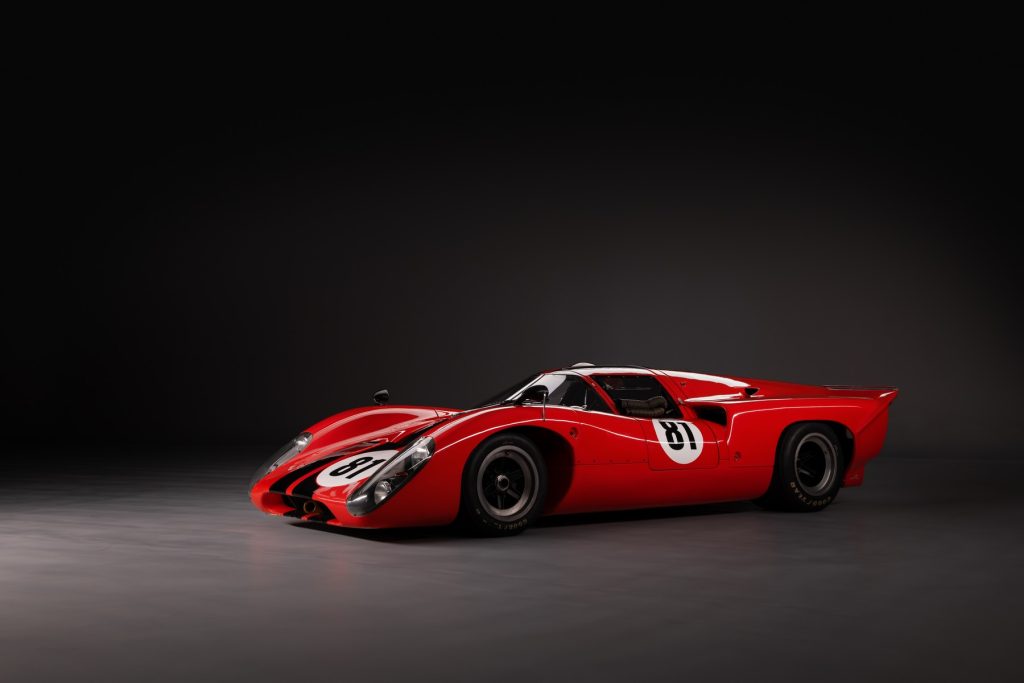
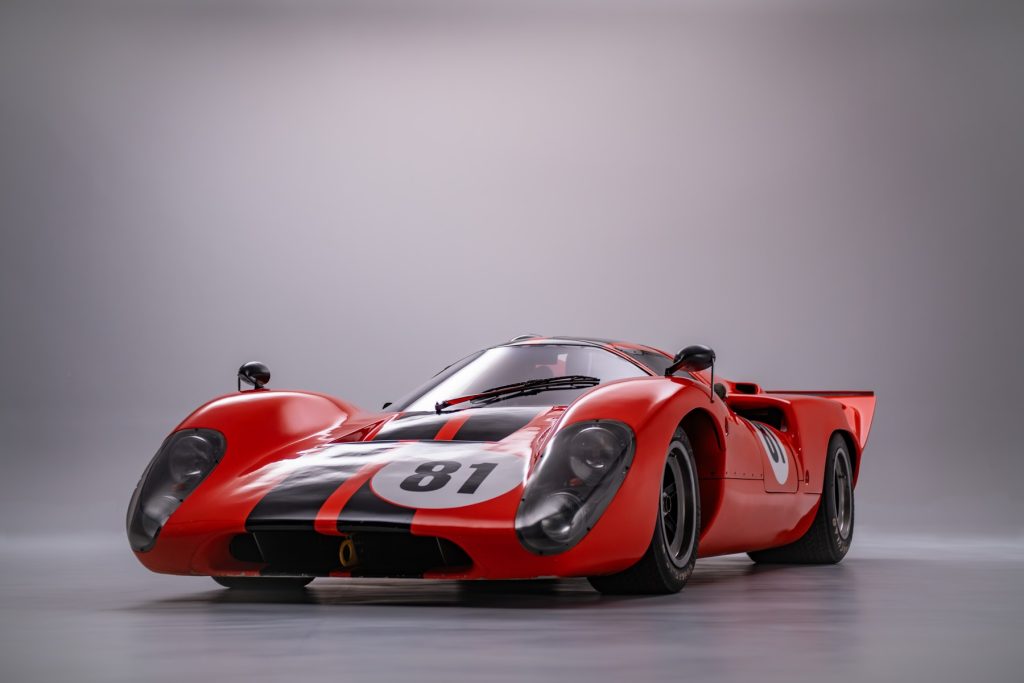
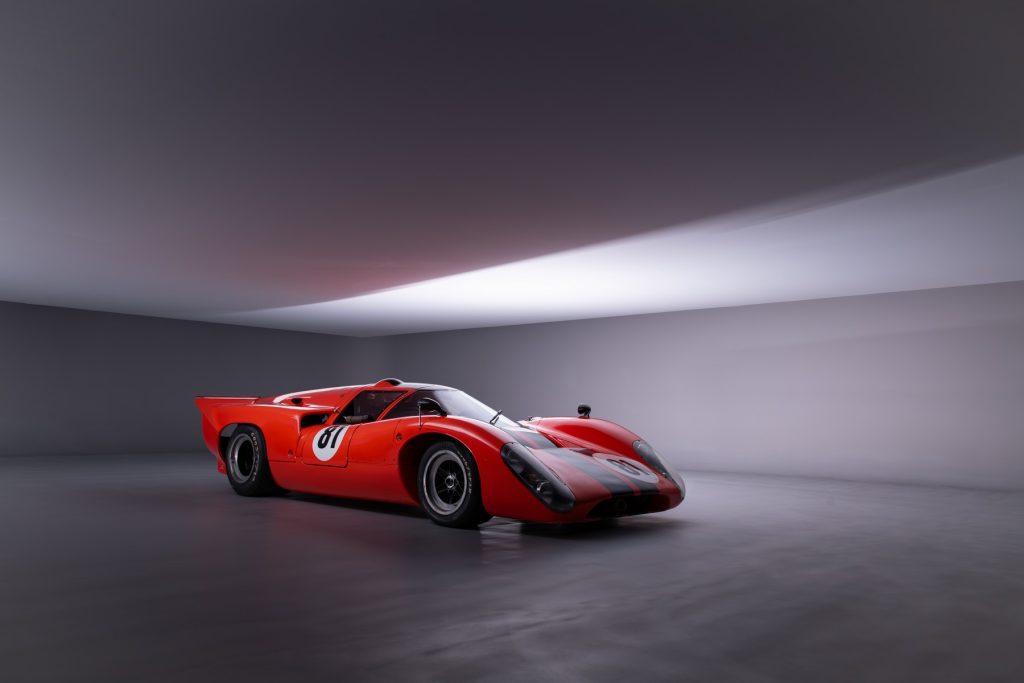
Whether it’s through historic racing events, restorations, or art like the Limited100 photoshoot, the Lola T70 is more than just a car; it’s a symbol of an era that defined motorsport history.
For those fortunate enough to own or experience a T70, it remains a thrilling reminder of the passion, innovation, and excitement that defined the golden age of racing. The Lola T70’s place in automotive history is secure, and it will continue to inspire for generations to come.
*(The MkII weighed in at 726 kg, while the MkIII and MkIIIB versions were 800 kg to 850 kg.)
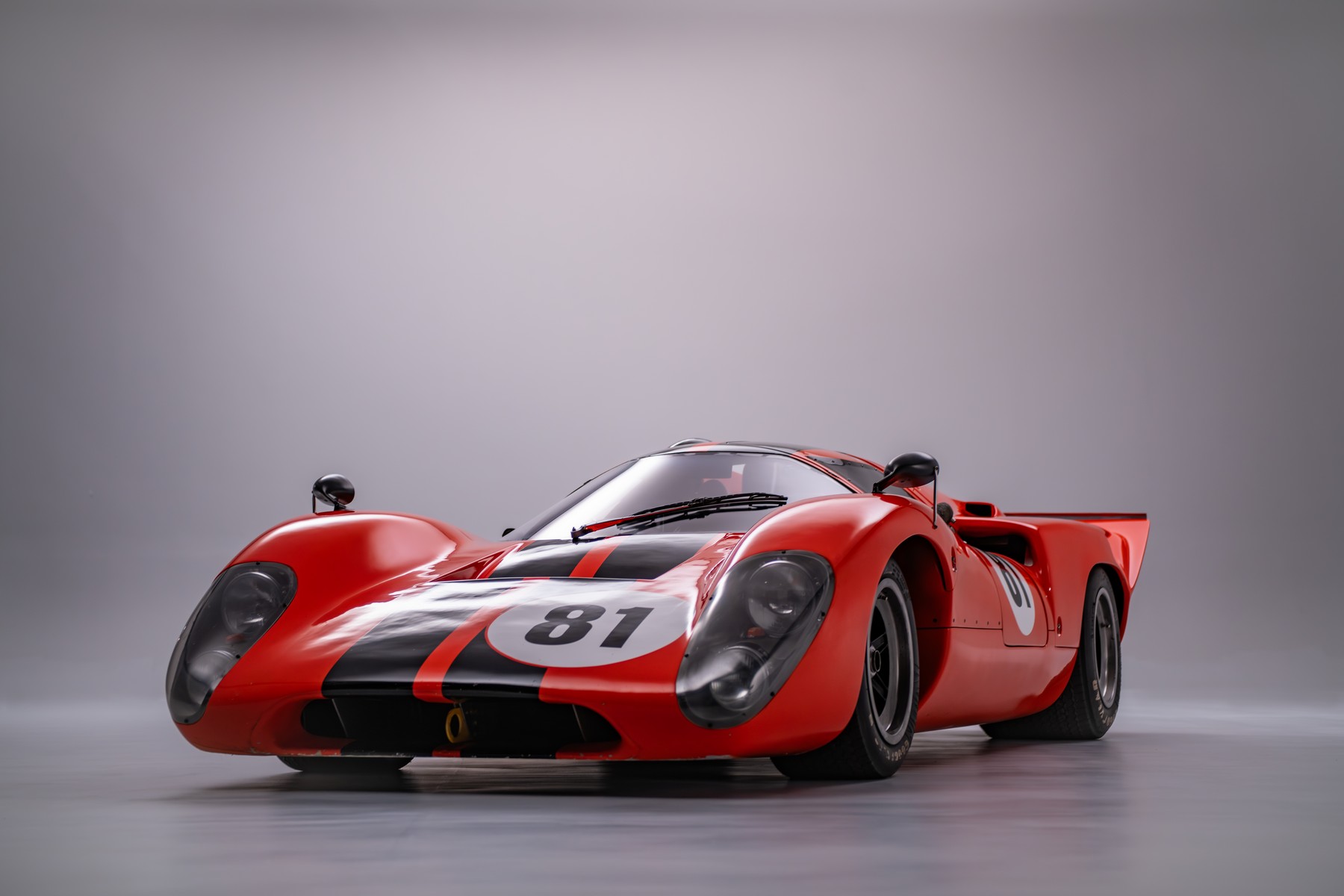









I currently represent a small consortium behind the recently refurbished (original) Lola T-70Mk3b, my specific role being to investigate interest in sponsoring the car… the plan being to enter it in the Grand Prix Masters support package in 2026, along with the Peter Auto event package… We see a genuine synergy between the brand values of Hagerty, being somewhat ‘old school’, which the company shares with the T-70, espoused both in its heyday and now as a piece of motorsport history… it would be a pleasure to come across to Pury Hill – where I, in fact, lived for almost 8 years (mine was the green Land Rover Defender l, which used to be parked over by the faux lock) – to expand on the opportunity we have on offer…